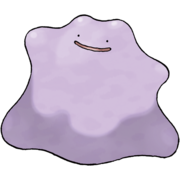Science and Pokémon: Pokémon eggs
|
|
Everyone remembers when they discovered Pokémon eggs for the first time in Generation II. It simplified completing the Pokédex, allowed for the player to be involved in the quality of the Pokémon, and added new and more complex ways of obtaining Pokémon. Ultimately, the addition of Pokémon eggs was the largest and most important change that occurred in Generation II.
The biology that the Pokémon eggs are based on is something (obviously) mundane: real eggs themselves. Most people have consumed unfertilized chicken eggs in some form. The reproductive cycle of most non-mammals is well-known: the female lays eggs, the male fertilizes them, the eggs are then taken care of until they are hatched, when the offspring have the chance to develop into adults of their species.
This last stage is the inspiration for baby Pokémon—Pokémon that are weak and feeble, and require much love and attention to become strong and a full-fledged member of their species. That the baby Pokémon are distinguished from the rest of the species is a nod to the developmental stage of all animals.
Yet the parallels between science and Pokémon stop there. One of the great complaints that the fandom has about the breeding system is that one species of Pokémon can breed with another species of Pokémon, in "egg groups." This has led to several photoshops of Pokémon that are bizarrely grouped, including the (in)famous Wailord and Skitty photoshop. Obviously, cross-breeding of species is usually not possible. But occasionally, two similar but different animals can make an infertile child: a lion and a tiger can breed to make a liger, and a horse and a donkey can breed to make a mule. Ultimately, these crossbreeds are rare, and genetically separated animals cannot breed. But that the Pokémon are grouped together by similar qualities to breed is occasionally found in real life.
A decent fraction of the Pokémon are based on mammals, and this poses further problems: mammals do not lay eggs, or at least not in the context that Pokémon uses. While female mammals do have eggs, or "ovum," these ova are microscopic and are incubated within the mother's body, not externally. But again, Pokémon is rescued by the exception: the platypus and the echidna. Both of these mammals do lay eggs and incubate them externally. These mammals are strange: they lay leathery eggs, yet they possess mammary glands to produce milk to feed to their young. There is some debate as to whether this group of animals should be grouped together with mammals or if they should be separated and given their own group, separate from mammals, but at the moment they are a branch of mammals. Outside of these few, most mammals do not lay eggs, but the fact that Pokémon allows mammals to lay eggs has a few real-life mammals that back that theory.
Pokémon does recognize that the Pokémon that are based upon ideas that are non-organic cannot lay eggs; it would be bizarre to see a Magnemite lay an egg, as it is based upon magnets. And again, to not allow the legendary Pokémon to reproduce is another time that Pokémon follows the rules of science: when there is only one animal left in a species, it cannot reproduce. But the most interesting Pokémon with respect to Pokémon eggs is Ditto. Most people have a Ditto parked in the Day Care as it can breed with any other Pokémon. This is where the series strays from science: Ditto can change shape. And while there are real life animals that try something similar for camouflage, it is always an inherent characteristic of that animal. If we assume for a moment that shape-shifting is possible, then Ditto could successfully breed with any Pokémon. However, as real-life shape-shifting does not exist, this facet of Pokémon breeding is the most radical and strays the furthest from science.
Pokémon eggs are generally based in science, or an interpretation of it: animals lay eggs, and new animals that are of the same species as the parents are created. With some bending of the rules, these Pokémon eggs answer the burning question that had been on everyone's mind in Generation I: how do Pokémon reproduce? This, like many other facets of Pokémon, is rooted in science.
- At the end of last year, Bulbanews hosted a holiday contest, in which would-be writers were encouraged to submit a Pokémon-related opinion piece. Hurristat placed an honorable mention. Over the next fortnight we will bring you the writings of the runner-up and the winner.


